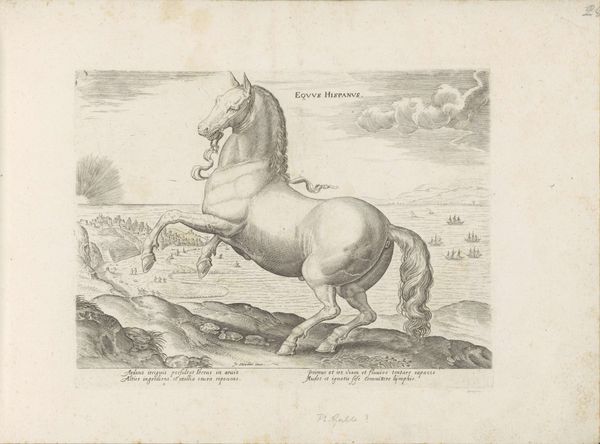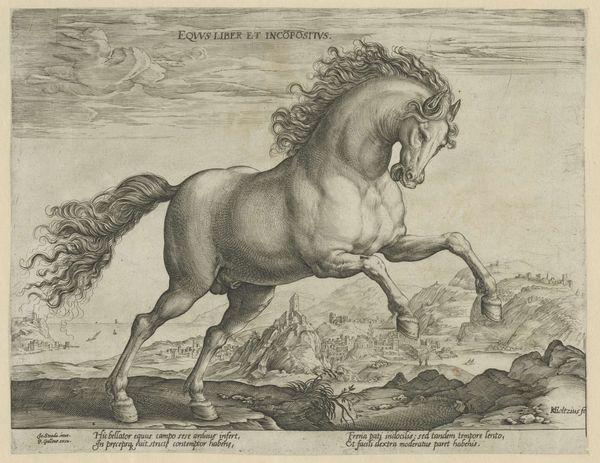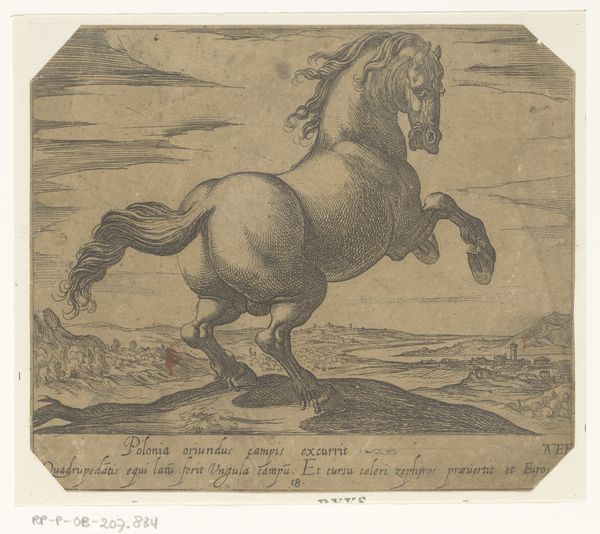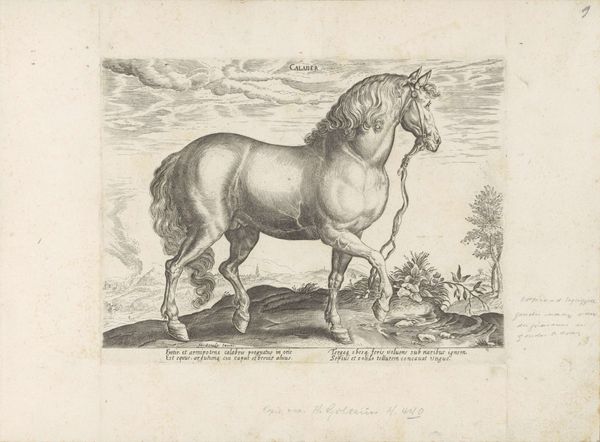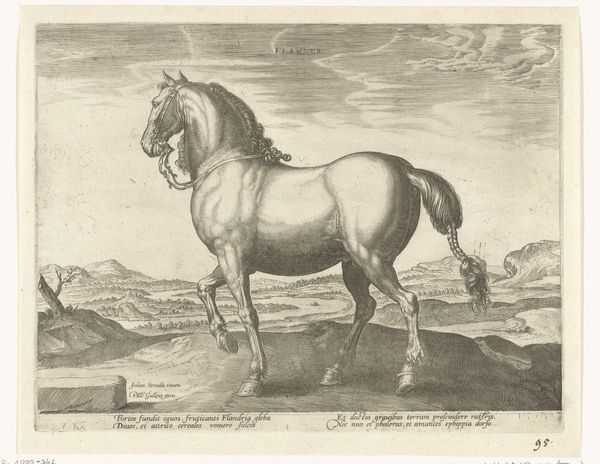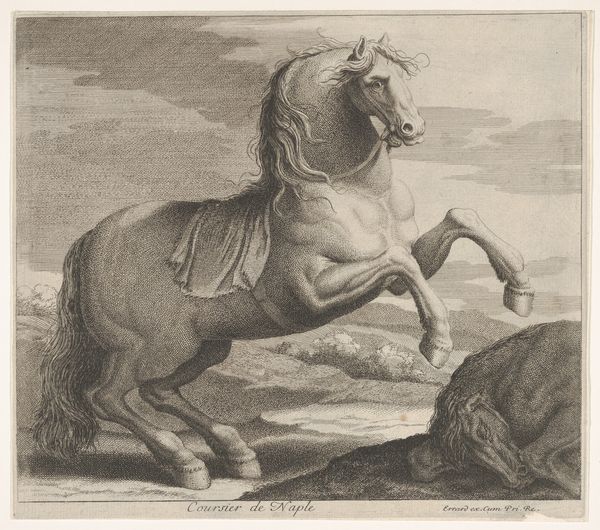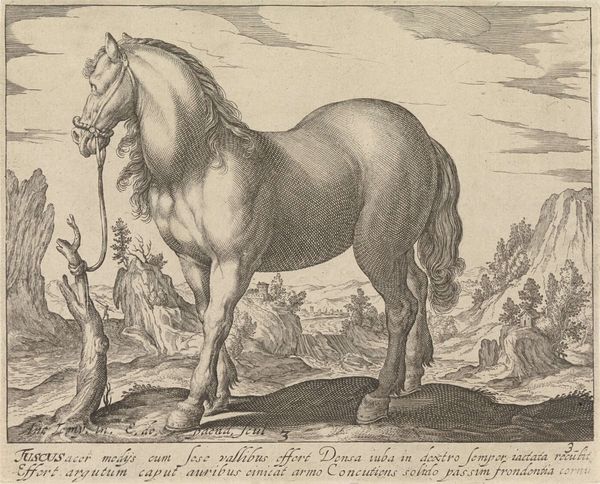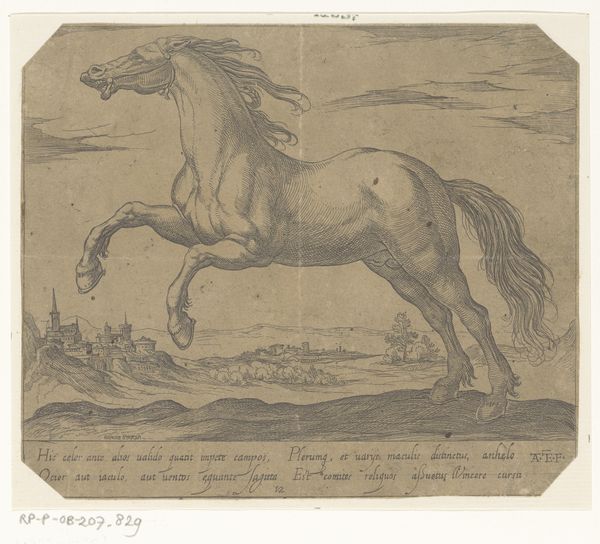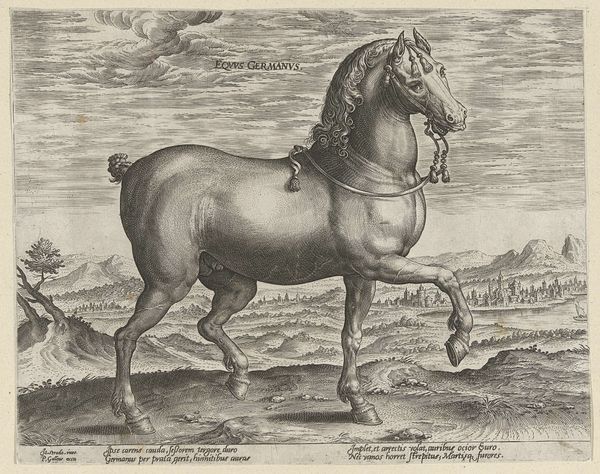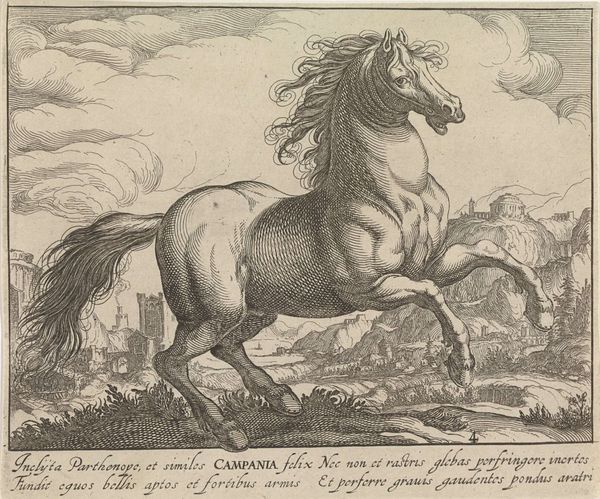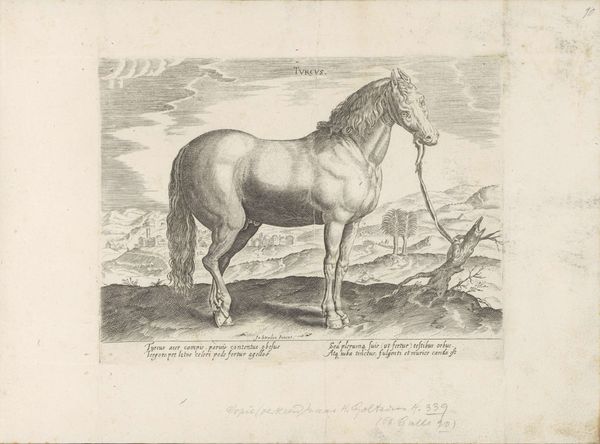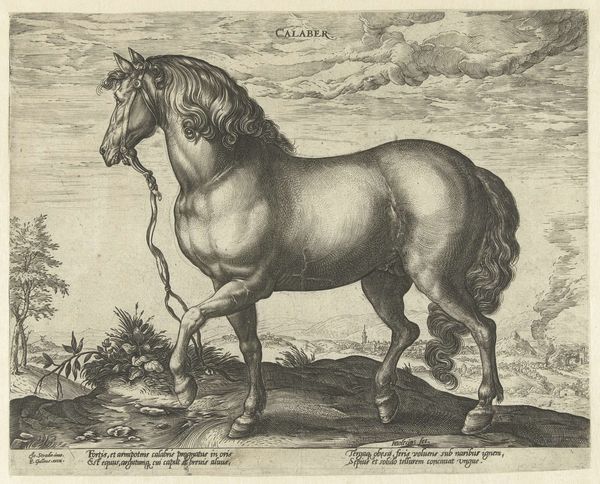
drawing, print, etching, engraving
#
drawing
#
baroque
# print
#
etching
#
charcoal drawing
#
horse
#
engraving
Dimensions: height 214 mm, width 265 mm
Copyright: Rijks Museum: Open Domain
Editor: Here we have an engraving titled "Wild Paard," before 1648, by an anonymous artist. It's currently housed in the Rijksmuseum. The horse seems so dynamic, full of energy! I'm struck by its wildness captured in such a controlled medium like engraving. How do you interpret this work? Curator: Well, this image pulses with the Baroque fascination with energy and untamed nature. Horses, particularly wild ones, have long been symbols of freedom, power, even raw instinct. Consider the title itself, "Equus Liber et Incopositus," a free and unrestrained horse. But there’s also the setting, almost stage-like; does this context alter or enhance the symbolic associations? Editor: I hadn't thought about it that way. It does look like a stage. Does that contrast between the "wild" subject and controlled setting change its meaning? Curator: Perhaps. Is this image then a true celebration of the wild, or something else? Maybe it presents an aspirational ideal? Consider how we, as humans, have long projected our desires for freedom and strength onto these animals. Also, consider how printing an image allows for the distribution of ideals! Editor: That’s a fascinating point. So the image then serves both as a reminder of primal power and the possibility of that kind of freedom within ourselves? Curator: Precisely! The image acts as a visual echo of deeply held human values. And also a beautiful reminder of how even an apparently straightforward image can carry complex layers of meaning and cultural weight. Editor: I see the engraving in a new light. I'm struck by how many interpretations you've found through the details. Thank you! Curator: And thank you. Art holds many meanings within its lines, waiting to be seen and discovered!
Comments
No comments
Be the first to comment and join the conversation on the ultimate creative platform.
